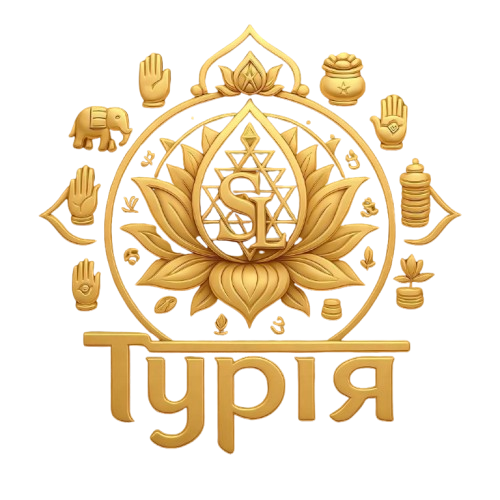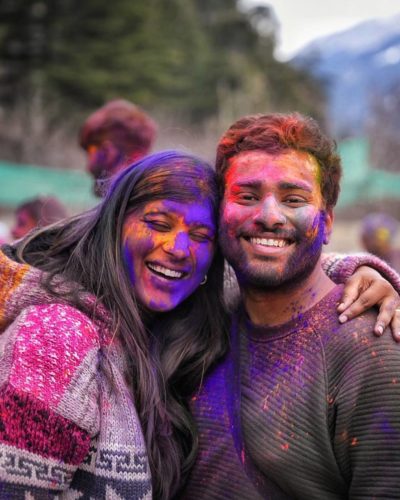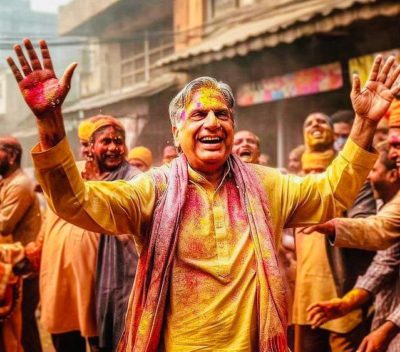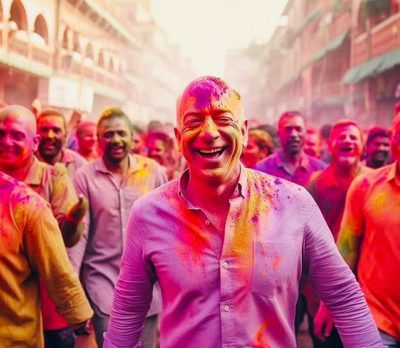Vedic Holidays of India
All holidays can be divided into three main groups:
- National holidays.
- Religious holidays and cultural festivals.
- Unofficial holidays.
Weekly holidays:
Monday: Shiva, Moon
Tuesday: Hanuman, Mars
Wednesday: Ganesha and Buddha, Mercury
Thursday: Vishnu and Guru, Jupiter
Friday: Shakti, Venus
Saturday: Shani, Saturn
Sunday: Surya, Sun
Monthly holidays:
Ekadashi (इकादशी):
Chaturthi (चतुर्थी)
Shivaratri (शिवरात्री):
Pradosh Vrat (प्रदोष व्रत):
Durgashtami (दुर्गाष्तमी):
Kalashtami (कालाष्तमी):
Skanda Shashthi (सकन्द षष्थी):
Janmashtami (जनमाष्तमी):
Sankranti (संक्रान्ति):
Chandra Darshan (चंद्र दर्षन):
Amavasya and Purnima (अमावस्य पूर्निमा):
Annual holidays:
Ganesha Chaturthi:
Navratri (नवरात्री):
Durga Puja:
Dashshera (दशलरा):
Karvachot (कर्व चुथ):
Diwali (दिवाली):
Bhai Duj (भाई धुज):
Makar Sankranti (मकर संक्रांति):
Vasant Panchami:
Mahashivaratri (महाशिवरात्र):
Holi (होली):
Hanuman Jayanti:
Rath Yatra (रथ यात्र):
Naag Panchami (नाग पांचमी):
Raksha Bandhan (रक्षा बादन):
Janmashtami (जनमाष्तमी):
Dashavatara (दशावतार):
Dashamahavidya (दशमहविद्य):
The Hindu Panchang calendar is one of the oldest calendar systems and is based on the lunisolar calendar (that is, both the phases of the moon and the movement of the sun are taken into account). Accordingly, the dates of certain events in the Gregorian calendar are constantly changing.
Monday: Shiva, Moon
Somvar is the first day of the week, literally “Day of the Moon”. It is clear from the context that the day is dedicated to the Moon and its patron – the god Shiva. On Monday, it is customary to fast and perform Shive puja. One popular practice is fasting during the month of Shravan (July-August), in which Hindus fast (or at least do not eat non-vegetarian food) every Monday during the month in honor of the god Shiva. Also, on Monday, fasting is done to harmonize the Moon in the horoscope. In general, it is recommended to engage in spiritual practices on Monday.
Tuesday: Hanuman, Mars
Mangalvar is the second day of the week dedicated to the planet Mars. On this day, it is customary to worship the god Hanuman, read mantras and Hanuman Chalisa. Since this is the day of the planet Mars, it is best for physical activities such as sports, running, exercise and so on. It is recommended not to consume non-vegetarian food. All administrative work is also best done on Monday, as the god Hanuman represents everything related to the state, army and police. Fasting can also be done to harmonize Ketu in the horoscope.
Wednesday: Ganesha and Buddha, Mercury
Buddhivar is the third day of the week, representing the planet Mercury. In connection with the name, Wednesday is dedicated to Buddha (the eighth avatar of the god Vishnu), but the worship of the god Ganesha on this day is considered the most popular. Mercury together with Ganesh take care of business, trade, financial affairs and everything related to material well-being, as well as learning and receiving new information. That is why it is recommended to perform Ganesha puja and fast on this day. Also, fasting can be aimed at harmonizing Mercury in the horoscope.
Thursday: Vishnu and Guru, Jupiter
Guruvar is the third day of the week dedicated to the planet Jupiter. Based on the name, it is clear that the day is mainly dedicated to gurus, spiritual teachers (as well as Brihaspati, who is the guru of all Devas), who are given gifts and shown respect. But no less popular on this day is the worship of the god Vishnu! People do poojas and avoid non-vegetarian food. Unlike Wednesday, Thursday is considered the most favorable day for education, reading and learning (in connection with the planet Jupiter).
Friday: Shakti, Venus
Shukravar is the fifth day of the week, the patron of which is the planet Venus. Venus embodies the female energy, which in Hinduism is called Shakti.
On this day, any form of Devi, the mother goddess: Lakshmi, Saraswati, Durga, Kali, and so on, is honored. Friday is an ideal day for self-care, trips to the beauty salon, etc. The day in the literal sense of the word is “women’s”. To harmonize Venus in the horoscope, Friday is the best day for fasting.
Saturday: Shani, Saturn
Shanivar (शनिवार) is the sixth day of the week, which embodies the planet Saturn. On Saturday, Hindus honor Saturn as the god Shani who is the one who sends people obstacles, trials, problems and karma in general. Believers observe a strict fast to propitiate the formidable Shani-dev, to neutralize karma and save them from difficulties. Fasting is also aimed at harmonizing Saturn, although the worship of Shani dev is equal to the worship of Saturn.
Sunday: Surya, Sun
Ravivar is the seventh and last day of the week, dedicated to the Sun. On this day, people worship the god Surya as the patron of the Sun. There are no special strict rules on this day, but pious people still offer water offerings to the Sun. Sunday is the best day for rest, resort and accumulation of strength.
Monthly holidays in Hinduism are called Vratas and usually occur twice a month: in Shukla Paksha (the period of the waxing moon) and in Krishna Paksha (the period of the waning moon), but there are exceptions. Adherence to the Brahmas is one way to attain Moksha.
Ekadashi (इकादशी):
Ekadashi is a day dedicated to the god Vishnu. Our ancestors noticed that if the weather is light on this day, then the weather will be gloomy on this day. Despite the fact that the second option is easier, both posts are equivalent. Fasting on Ekadashi 24 hours a day, from sunrise to sunrise. The second day after Ekadashi is called Dwadashi (द्वादशी) and if a person could not fast on Ekadashi, he can fast on Dwadashi. To break the fast, it is enough to eat any grain food. Ekadashi occurs twice a month, on the 11th day after the new moon and on the 11th day after the full moon (given this information, you can calculate the Ekadashi yourself, but I still recommend using calendars to avoid mistakes and missing special days). Ekadashi fasting is recommended for staunch devotees seeking love from Lord Vishnu.
Chaturthi (चतुर्थी)
During Chaturthi, devotees of Lord Ganesha fast from sunrise to moonrise. Pujas and pilgrimages to the temple are performed. There are two Chaturthi days in each lunar month of the Hindu calendar. The one after the new moon during Shukla Paksha is known as Sankashthi Chaturthi and the one after the full moon during Krishna Paksha is known as Vinayaka Chaturthi. Calculating Chaturtha is also recommended using a special Hindu calendar based on location. Lord Ganesha, the supreme ruler of the mind, symbolizes the removal of all obstacles. Therefore, it is believed that by following this position, one can get rid of all obstacles.
Shivaratri (शिवरात्री):
Shivaratri is a great celebration of the rapprochement of Shiva and Shakti. In every month, the 14th during Krishna Paksha (after the full moon) is known as Masik (monthly) Shivaratri. Shivaratri, which falls in the month of Phalguna (February-March) is called Mahashivaratri (Great Night of Shiva). According to Hindu mythology, Lord Shiva appeared in the form of a lingam at midnight on Mahashivaratri. Shivalingam was first worshiped by Vishnu and Brahma. Hence, Mahashivaratri is known as Lord Shiva’s birthday and devotees worship the Shivalingam during Shivaratri. Shivaratri Brahm is popular since ancient times. According to the Puranas, even goddesses Lakshmi, Indrani, Saraswati, Gayatri, Savitri, Sita, Parvati, Rati observed the Shivaratri fast. Devotees who wish to observe the Masika Shivaratri Vrat can start it on the day of Maha Shivaratri and continue throughout the year
Pradosh Vrat (प्रदोष व्रत):
Pradosh Vrat is another monthly festival dedicated to Lord Shiva. However, unlike Masik Shivaratri, it occurs twice a month: on the 13th day after the new moon and the full moon.
Durgashtami (दुर्गाष्तमी):
The durgashtami fast, which is also known as Durga Ashtami, is observed every month on the 8th day of Shukla Paksha (after the new moon). On this day, devotees of Goddess Durga worship Her and observe a daily fast. The most significant Durgashtami, known as Mahashtami, falls in the month of Ashwin during the nine-day celebration of Sharad Navratri.
Kalashtami (कालाष्तमी):
Kalashtami, which is also known as Kala Ashtami, is celebrated every month on the 8th day of Krishna Paksha (after the full moon). Devotees of Lord Bhairava fast and worship Him on all the Kalashtami days of the year. The most significant Kalashtami is known as Kalabhairav Jayanti (the day of appearance of Lord Shiva in the form of Kala Bhairava).
Skanda Shashthi (सकन्द षष्थी):
Skanda is a popular Hindu deity, especially among Tamil Hindus. Lord Skanda is the son of Lord Shiva and Goddess Parvati. In South India, Skanda is considered the younger brother of Lord Ganesh, and in North India, Skanda is considered the elder brother of Lord Ganesh. Lord Skanda is also known as Murugan, Kartikeya and Subrahmanya. The 6th day of Shukla Paksha (after the new moon) is dedicated to Lord Skanda and devotees observe a fast in his honour.
Janmashtami (जनमाष्तमी):
Masik Janmashtami is a monthly celebration of Lord Krishna’s birthday. Devotees observing fast on Janmashtami should eat only once a day till Janmashtami. On this day, devotees perform Puja to Krishna. However, there is much controversy among Krishnaites, Vaishnavas and Smartas around the calculation of the date of this festival.
Sankranti (संक्रान्ति):
Sankranti is a day of honoring the sun god, Surya. There are only 12 Sankrantis in the whole year and the very first Sankranti, Makar Sankranti, is a great festival of Surya and Sun worship. Sankranti days are considered auspicious for charitable activities and auspicious ceremonies are avoided on Sankranti day.
Chandra Darshan (चंद्र दर्षन):
Chandra Darshan is the first day of moon sighting after moonless days. In Hinduism, the day of the new moon is known as Amavasya, and the first appearance of the moon after the new moon has religious significance. People observe the day fast and break it after seeing the new moon on Chandra Darshan day.
Amavasya and Purnima (अमावस्य पूर्निमा):
Amavasya – new moon, Purnima – full moon. Oddly enough, in the Hindu tradition it is customary to take into account these days, which can be religiously important.
From the monthly holidays, it is clear that they are closely related to the annual ones, since most often the annual holidays mark the beginning of observing the monthly ones. Below are the most popular Hindu holidays and festivals.
Ganesha Chaturthi:
Ganesh Chaturthi is celebrated as the birth anniversary of Lord Ganesha. On Ganesh Chaturthi, Ganesha is worshiped as the god of wisdom, prosperity and luck. Currently, Ganesha Chaturthi falls in August or September in the Gregorian calendar. The Ganesha Chaturthi festival lasts for 10 days and on the last day, Anant Chaturdashi, which is also known as Ganesha Visarjan day, devotees immerse the idol of Lord Ganesha in water bodies after a ceremonial street procession. Ganesha Chaturthi is a very interesting and fun festival and with its beginning it opens the year for the coming festivals. Every 10 days there are pujas, festivals where people seek the blessings of Ganesha. Many stories, feats and traditions are also connected with this holiday.
Navratri (नवरात्री):
Navaratri literally translates to ‘nine nights’ and these nine nights are dedicated to the goddess Durga and her nine forms called Navadurga. Navaratri celebrations are usually accompanied by strict fasting, and the refusal of certain foods and activities (such as cutting hair, nails, etc.). On the first day of Navaratri, believers place a Murti (image, idol) of Goddess Durga in the house, and on the 10th day, called Vijayadashami, when the festival ends, they immerse the Murti in water bodies. In fact, there are 4 Navarathris during the year: Autumn, Winter, Spring and Summer.
The most popular time of the year to celebrate Navaratri is during the autumn period, and Navaratri at this time is called Sharad Navaratri (after Sharad). Navratri is mainly celebrated in North and West India.
Durga Puja:
Unlike Navaratri, Durga Puja is celebrated in eastern India, namely in West Bengal and Bangladesh. While Navaratri is a festival to honor the 9 forms of Goddess Durga, Durga Puja is celebrated as the victory of Goddess Durga over the demon Mahishasura. At this glorious time, Goddess Durga bears the name ‘Mahishasuramardini’, meaning ‘she who defeated the demon Mahisha’. The traditions of celebrating Navaratri and Durga Puja are different, but they are still worshiping the same goddess. Durga Puja is celebrated for only 5 days, and the rules are less strict: there are no strict restrictions on eating, and during the festive feasts you can even find meat dishes. Durga Puja is a fun festival where people party and celebrate victory over evil.
Dashshera (दशलरा):
Dashshera is the festival of the victory of Lord Rama over the demon Ravana and is celebrated on the 9th day of Navaratri. The main tradition of this holiday is the puja to the god Rama, and the most important thing is the burning of Ravana’s effigy. It is believed that on this day, Lord Rama prayed to Goddess Durga for help in defeating evil.
Karvachot (कर्व चुथ):
On this day, married women fast for the long life of their husbands. The tradition of interrupting the mail is very romantic: men feed their wives with their hands, who are looking at the moon.
Diwali (दिवाली):
Diwali, or the traditional Hindu New Year, is a festival of lights. The main tradition of the holiday is the lighting of oil lamps, firecrackers and fireworks. Well, of course, at the center of the entire celebration is the goddess Lakshmi, the patroness of beauty, well-being, and home. Before the holiday, Hindus clean the house, because it is believed that on Diwali, the goddess Lakshmi will visit the cleanest houses. If we talk about a more religious holiday, then in fact it lasts for five days: two days before and after Lakshmi Puja. However, the main thing is the worship of the goddess Lakshmi. In addition to these traditions, believers paint patterns on the floor of their houses with colored powders to attract the goddess. The holiday itself is accompanied by fun, feasting, festive noise and even drinking alcohol, because the goddess Lakshmi is happy when the believers are having fun. Diwali takes place at the end of autumn.
Bhai Duj (भाई धुज):
Bhai Duj is a holiday dedicated to elder brothers. On this day, older brothers receive gifts from family members.
Makar Sankranti (मकर संक्रांति):
Makar Sankranti is a great festival of the Sun, the god Surya. The main tradition of this day is the sun puja, offering water to the god Surya, and the funnest thing is kite flying! The celebration is accompanied by prayers, games and feasts.
Vasant Panchami:
A day dedicated to Goddess Saraswati. Believers pray to the goddess, perform pujas, go to temples, hoping for blessings from the goddess Saraswati, help in learning and acquiring knowledge.
Mahashivaratri (महाशिवरात्र):
The Great Night of Shiva, or the festival of the appearance of Lord Shiva in the form of Shivalingam, union with Shakti. The main celebration begins at night when prayers, pujas, ritual and spiritual practices begin. Self-respecting Hindus simply cannot afford to miss such an energetically powerful time of day this night, and so everyone stays awake. Mahashivaratri is equally celebrated in the temples, where chants, mantras and stotras are heard throughout the night. Lord Shiva is most favorable to his followers on this night. Abhishek Shivalingam is another important part of the holiday. On this night, people devote themselves to reading sacred spiritual scriptures, legends about Shiva, meditations and prayers.
Holi (होली):
Perhaps the most popular and fun festival of Hinduism. Holi lasts for two days. On the first day, believers burn an effigy of Holika demons, and on the next day, they throw paints! Everyone is specially dressed in white clothes so that all the colors are visible.
Similarly, the Holi event is associated with Lord Krishna.
Hanuman Jayanti:
Lord Hanuman’s birthday. On this day, devotees recite mantras to him, perform pujas and tell about legends associated with him.
Rath Yatra (रथ यात्र):
Rath Yatra is a festival in honor of Lord Jagannath, an avatar of Lord Vishnu. Mainly practiced by Krishnaites and Vaishnavas. The Rath Yatra is accompanied by the tradition of carrying the sacred chariots with the idol of Jagannath, and the main celebration takes place in the town of Jagannath Puri.
Naag Panchami (नाग पांचमी):
Naag Panchami is a day to worship snakes because snakes like any other animals are sacred and chosen by Lord Shiva. Milk and kefir are mainly served to snakes.
Raksha Bandhan (रक्षा बादन):
The widespread Raksha-Bandhan is a festival of tying the sacred Hindu thread. It is believed that this thread is able to protect against negative influences and has a beneficial effect on the spiritual state. On this day, family members tie these threads on each other’s wrists.
Janmashtami (जनमाष्तमी):
Appearance day of Lord Krishna. The center of the puja is usually an idol of Lord Krishna riding on a swing with his beloved Radha.
Dashavatara (दशावतार):
This holiday should have been classified as a monthly holiday, but it is held throughout the year, so it is annual. Dashavatara means “ten avatars of Vishnu” and their birthdays fall on different dates throughout the year. Hindus perform pujas and pray to them.
Dashamahavidya (दशमहविद्य):
Just like with Dashavatara: during the whole year the apparitions of ten tantric goddesses (of which the popular goddess Kali is also a part) are performed.


 Українська
Українська Русский
Русский



